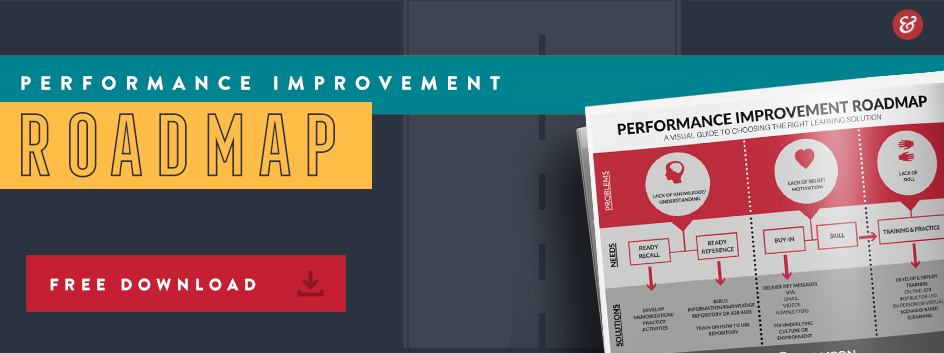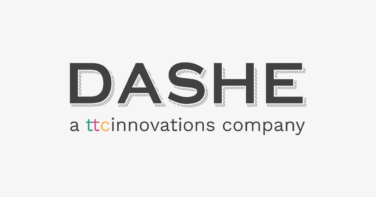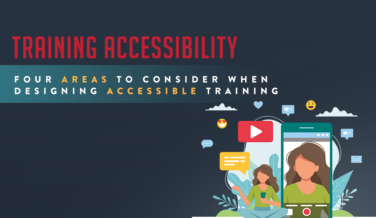From Training To Performance: Bridging The Gap
What Is the Disconnect Between Training and On the Job Performance
A major struggle that arises after an employee goes through training is knowing when and how to apply their new skills to real life situations. Without seeing the impact of these new skills, the employee has zero idea of what the outcome should look like, how to use their skills appropriately, and how to connect processes to real life situations. Another struggle to consider is how common it is for individuals to forget; it is a normal human characteristic that needs to be addressed during the learning process. A great reference would be the “Ebbinhaus’ Forgetting Curve” this shows the decline of memory retention over time. Supporting your learners is important and acknowledging forgetfulness as a normal human characteristic instead of a weakness will encourage their learning and build a positive relationship between the employer and employee.
Challenges Training Teams Face When Employees Enter the Workforce
- Many training teams provide an ample amount of content in their training, but they fall short of supporting practice and integration of the knowledge into everyday behaviors.
- There are often minimal opportunities during the training (and after) for the learner to practice and get used to using new skills and procedures in real life situations.
- Trainees are expected to comprehend textualized information and apply it to complicated situations in the workplaces, without knowing the expected outcomes of these new skills and procedures.
Using “5 Moments of Need”
The 5 Moments of Need is a model created by Bob Mosher & Conrad Gottfredson, that considers the different moments necessary to go from learning something new to using it successfully and regularly in the workplace. Supporting the learner at each moment of need gives the learner the opportunity to truly learn and integrate new behaviors:
- Learning For the First Time (New): This is the perfect time to introduce new skills, processes, and characteristics. This can be done in different ways for example: e-courses, modules, or events, any of these training methods work if they are engaging, interactive, and necessary for each individual involved.
- Learning More (More): All these moments must come from the learners, their need for “more” knowledge, skills, or experience will help them retain the information being taught. Wanting “more” will make them eager to use what they learned and able to apply it to real life situations. If the individual takes an interest in “more” it is important to provide them with the necessary skills and support needed for their success.
- Applying What You Have Learned (Apply): This moment applies to on-the-job and real-life situations where you can support the employee by providing references and transition support: manual, notes, microlearning, reminders, learning in the flow of work, and managers/champions/peers. This moment is lynchpin for transferring learning to new behaviors. This is about helping learners not to get stuck in a situation and providing opportunities for the learner to practice safely. Having access to these supports will build confidence and competence for the learner.
- When Things Go Wrong (Problem Solving): In this moment it is important to have immediate access to help, such as from an onsite manager or experienced peer, access to FAQ’s, help desk, etc. These moments often are ones that cannot be trained or foreseen, so having a help process in place is critical. Social learning and learning in the flow of work are excellent supports for this moment.
- When Things Change (Change): This moment can be particularly challenging because it usually entails unlearning and relearning. Trying to change a practiced skill or process is challenging for the human brain. Often these moments require access to other people and new information for the learner to navigate. If you are truly trying to create mastery, you must support the learner all the way through this moment. Some good tools are repetition with changing parameters, access to other employees to make sense of changes and their impact on what has been learned, and follow-on learning and performance support.
How to Bridge the Gap Between Training and Performance
- Support From Managers and peers (Social Learning): Having continuous support at all levels and for every position will give the employees someone to go to when they start to dip on the Forgetting Curve or when the situation changes. It is normal for the human brain to have memory loss, and it is exacerbated when learning multiple things at one time, under a certain time, or when the stakes feel high. Once the learner puts their knowledge into action, they around bound to forget steps and skills learned during training. Providing them with constant social support (help and communication) will make it easier for them to succeed and feel confident applying the news skills on their own.
- Change The Training Mindset (it is not training, it is performance support): It is important to avoid a set training that forces everyone to learn the same way, just as it is important not to stop at learning/training alone. Avoid using training that cannot be modified per an individual’s characteristics. Everyone learns differently and cannot grasp information at the same time and manor as their coworkers, allow room for growth and change in each training. As to that, much of what we think of as “learning” actually happens after the training. Your learning programs need to consider practice over time and in changing situations.
- Provide Real Life Examples (show them what good looks like): Embed examples (ideally real), scenarios, and practice that require the learner to consider and use new skills and procedures learned in each module. Make sure that the situations they are being placed in are accurate to ones they will experience in their designated position. It is imperative that these exercises are as close to real life as possible; the more realistic the less chance of them being stumped or stressed when faced with that situation in real time (I.e., better transfer into behaviors).
- Provide Continuous On-The-Job Support: Once the employee is released from training and performing their duties, the support from L&D and the business should not stop. There should be support materials, events, and people available throughout their time at the organization, and opportunities to get feedback on the skills and behaviors they are expected to have/learn.

Training Is Not Enough
- Training for the Wrong Reasons: Do not implement trainings that are not beneficial to employees, not every training pertains to each department and position, doing so can lead to over –training (think of this as the L&D version of “that meeting could have been an email”). Use realistic reward systems. For example, do not promise promotions completing a training if the purpose of the training is to change behavior—reward the learner’s outcomes and performance. Focus on the purpose for each training course and to whom it applies. Promote the desire for knowledge and commitment to changing behaviors within your employees, recognize the efforts of change instead of the completion.
- Train at the right Time: Humans learn best when they feel it is something that must be done (versus when someone else says it must be done). You will see more retention of the information and witness more success in their performance if learning happens in the moment of need. It seems obvious, but it bears repeating: the closer training is to the actual moment of need, the more it will transfer into the workplace.
- Losing What They Don’t Use: We all have heard “if you don’t use it, you lose it” and this could not be any truer when it comes to new skills, tools, and processes in a training course. If an employee is not faced with certain situations on a regular basis that requires them to use what they have learned, they will forget it. This is when it’s crucial to provide extra support such as mock events and practice and peer support.
- Leave Time to Review: When an employee is trying to comprehend and retain instruction, you must be prepared to refresh and remind trainees. You cannot avoid the Forgetting Curve, but you can mitigate it: repetition, spaced practice, and social support are critical here. These supports help the brain to remember and the learner to employ what is being taught and allows the brain to acknowledge things that were missed the first, second, and third time around.
Bridge The Gap by Supporting the Moments of Need
Bridging the gap between training and on-the-job performance requires thought and time but is possible. The support that you provide can link the training to performance. Thinking about the space between training and doing—and thinking about training more holistically—can drastically improve performance in an organization.
Continue reading

Dashe joins ttcInnovations
Learn More
Embracing the Future: Early Adopters of Generative AI for Learning
Learn More
Four Areas To Consider When Designing Accessible Training
Learn MoreCommitted to
finding solutions
